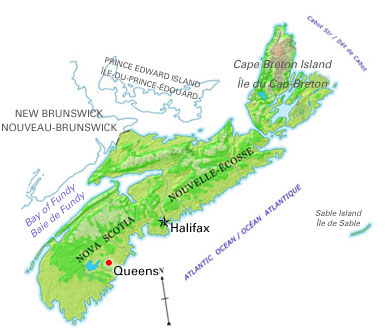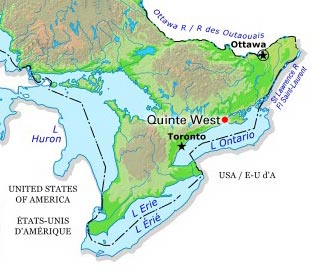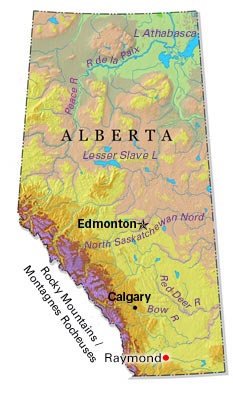Browse "Cities & Populated Places"
-
Article
Princeton
Princeton, BC, incorporated as a town in 1978, population 2724 (2011c), 2780 (2006c). The Town of Princeton is located at the junction of the Tulameen and Similkameen rivers, 114 km west of PENTICTON.
"https://development.thecanadianencyclopedia.ca/images/tce_placeholder.jpg?v=e9dca980c9bdb3aa11e832e7ea94f5d9" // resources/views/front/categories/view.blade.php
https://development.thecanadianencyclopedia.ca/images/tce_placeholder.jpg?v=e9dca980c9bdb3aa11e832e7ea94f5d9
-
Article
Province of Canada (1841-67)
In 1841, Britain united the colonies of Upper and Lower Canada into the Province of Canada. This was in response to the violent rebellions of 1837–38. The Durham Report (1839) recommended the guidelines to create the new colony with the Act of Union. The Province of Canada was made up of Canada West (formerly Upper Canada) and Canada East (formerly Lower Canada). The two regions were governed jointly until the Province was dissolved to make way for Confederation in 1867. Canada West then became Ontario and Canada East became Quebec. The Province of Canada was a 26-year experiment in anglophone-francophone political cooperation. During this time, responsible government came to British North America and expanded trade and commerce brought wealth to the region. Leaders such as Sir John A. Macdonald, Sir George-Étienne Cartier and George Brown emerged and Confederation was born. (This is the full-length entry about the Province of Canada. For a plain language summary, please see Province of Canada (Plain Language Summary).)
"https://d2ttikhf7xbzbs.cloudfront.net/media/media/dcae055f-192e-4de7-b004-4a70146eca56.jpg" // resources/views/front/categories/view.blade.php
https://d2ttikhf7xbzbs.cloudfront.net/media/media/dcae055f-192e-4de7-b004-4a70146eca56.jpg
-
Article
Prud'homme
Prud'homme, Saskatchewan, incorporated as a village in 1922, population 167 (2016 census), 172 (2011 census). The village of Prud'homme is located about 45 km northeast of Saskatoon. Prud'homme is the hometown of Jeanne Sauvé, a former cabinet minister in the Pierre Trudeau government, the first woman to hold the position of Speaker of the House of Commons and the first woman to act as Governor General of Canada.
"https://development.thecanadianencyclopedia.ca/images/tce_placeholder.jpg?v=e9dca980c9bdb3aa11e832e7ea94f5d9" // resources/views/front/categories/view.blade.php
https://development.thecanadianencyclopedia.ca/images/tce_placeholder.jpg?v=e9dca980c9bdb3aa11e832e7ea94f5d9
-
Article
Pugwash
Pugwash, NS, incorporated as a village in 1948, population 744 (2011c), 784 (2006c). Pugwash is located 65 km northwest of TRURO, at the mouth of the Pugwash River.
"https://development.thecanadianencyclopedia.ca/images/tce_placeholder.jpg?v=e9dca980c9bdb3aa11e832e7ea94f5d9" // resources/views/front/categories/view.blade.php
https://development.thecanadianencyclopedia.ca/images/tce_placeholder.jpg?v=e9dca980c9bdb3aa11e832e7ea94f5d9
-
Article
Qalipu Mi’kmaq First Nation
Qalipu (pronounced: ha-lee-boo) is a Mi’kmaq First Nation based in Newfoundland and Labrador. The nation was established in 2011 under the Indian Act. According to the federal government, Qalipu has 24,464 registered members in 2021, making it the second-largest First Nation by population in Canada. The nation’s members hail from 67 different communities across Newfoundland. As of 2020, roughly 95 per cent of Qalipu members live in Newfoundland and Labrador; the other 5 per cent live throughout Canada. The Qalipu Mi’kmaq First Nation currently controls no reserve land. (See also Reserves in Newfoundland and Labrador.)
"https://d2ttikhf7xbzbs.cloudfront.net/Marc Humber article pic.jpg" // resources/views/front/categories/view.blade.php
https://d2ttikhf7xbzbs.cloudfront.net/Marc Humber article pic.jpg
-
Article
Qualicum Beach
Qualicum Beach, BC, incorporated as a town in 1983, population 8687 (2011c), 8502 (2006c). The Town of Qualicum Beach is located on the east coast of VANCOUVER ISLAND, 48 km north of NANAIMO. The name Qualicum is a Straits Salish (see SALISH, CENTRAL COAST) word meaning "where the dog salmon run.
"https://development.thecanadianencyclopedia.ca/images/tce_placeholder.jpg?v=e9dca980c9bdb3aa11e832e7ea94f5d9" // resources/views/front/categories/view.blade.php
https://development.thecanadianencyclopedia.ca/images/tce_placeholder.jpg?v=e9dca980c9bdb3aa11e832e7ea94f5d9
-
Article
Quebec Act, 1774
The Quebec Act received royal assent on 22 June 1774. It revoked the Royal Proclamation of 1763, which had aimed to assimilate the French-Canadian population under English rule. The Quebec Act was put into effect on 1 May 1775. It was passed to gain the loyalty of the French-speaking majority of the Province of Quebec. Based on recommendations from Governors James Murray and Guy Carleton, the Act guaranteed the freedom of worship and restored French property rights. However, the Act had dire consequences for Britain’s North American empire. Considered one of the five “Intolerable Acts” by the Thirteen American Colonies, the Quebec Act was one of the direct causes of the American Revolutionary War (1775–83). It was followed by the Constitutional Act in 1791. This is the full-length entry about the Quebec Act of 1774. For a plain language summary, please see The Quebec Act, 1774 (Plain-Language Summary).
"https://d2ttikhf7xbzbs.cloudfront.net/media/media/bcf0dcc3-ce34-4098-8543-00bcccbaabe0.jpg" // resources/views/front/categories/view.blade.php
https://d2ttikhf7xbzbs.cloudfront.net/media/media/bcf0dcc3-ce34-4098-8543-00bcccbaabe0.jpg
-
Article
Quebec City
Quebec City, Quebec, founded in 1608, population 549,459 (2021 census), 531,902 (2016 census). Quebec City, the capital of the province of Quebec, is located on the north shore of the St. Lawrence River where it meets the Rivière Saint-Charles. Here, the St. Lawrence narrows to a width of just over 1 km, and navigation is made difficult by a group of islands, the largest of which is Île d'Orléans. Cap-Diamant, a promontory with an elevation of 98 m, dominates the site and was used effectively as a fortification, earning Quebec City the name "Gibraltar of North America." The name "Quebec" is probably derived from an Algonquian word meaning "narrowing of the river."
"https://d2ttikhf7xbzbs.cloudfront.net/media/media/0b8d15c8-f384-4d69-b611-1fb9ccd5f02d.jpg" // resources/views/front/categories/view.blade.php
https://d2ttikhf7xbzbs.cloudfront.net/media/media/0b8d15c8-f384-4d69-b611-1fb9ccd5f02d.jpg
-
Article
Queens
Queens, NS, incorporated as a regional municipality in 1996, population 10 917 (2011c), 11 177 (2006c). The Region of Queens Municipality is located approximately 150 km southwest of Halifax.
"https://d2ttikhf7xbzbs.cloudfront.net/media/media/22724662-cbf7-461d-9649-5a5c6a3a3b7f.jpg" // resources/views/front/categories/view.blade.php
https://d2ttikhf7xbzbs.cloudfront.net/media/media/22724662-cbf7-461d-9649-5a5c6a3a3b7f.jpg
-
Article
Quesnel
Quesnel, BC, incorporated as a city in 1928, population 10 007 (2011c), 9326 (2006c). The City of Quesnel is located at the junction of the Quesnel and Fraser rivers in central British Columbia, 625 km northeast of Vancouver.
"https://development.thecanadianencyclopedia.ca/images/tce_placeholder.jpg?v=e9dca980c9bdb3aa11e832e7ea94f5d9" // resources/views/front/categories/view.blade.php
https://development.thecanadianencyclopedia.ca/images/tce_placeholder.jpg?v=e9dca980c9bdb3aa11e832e7ea94f5d9
-
Article
Quinte West
Long occupied by Indigenous peoples, at the time of first European contact, the Mississauga (Ojibwa) occupied the region.
"https://d2ttikhf7xbzbs.cloudfront.net/media/media/ee432d3b-83bf-4fa4-acd0-c86635530374.jpg" // resources/views/front/categories/view.blade.php
https://d2ttikhf7xbzbs.cloudfront.net/media/media/ee432d3b-83bf-4fa4-acd0-c86635530374.jpg
-
Article
Quispamsis
Quispamsis, NB, incorporated as a town in 1998, population 17 886 (2011c), 15 239 (2006c). The Town of Quispamsis is located 22 km northeast of SAINT JOHN along the Kennebecasis River.
"https://development.thecanadianencyclopedia.ca/images/tce_placeholder.jpg?v=e9dca980c9bdb3aa11e832e7ea94f5d9" // resources/views/front/categories/view.blade.php
https://development.thecanadianencyclopedia.ca/images/tce_placeholder.jpg?v=e9dca980c9bdb3aa11e832e7ea94f5d9
-
Article
Raymond
Raymond, Alberta, incorporated as a town in 1903, population 3,708 (2016 census), 3,743 (2011 census). The town of Raymond is located in southern Alberta, approximately 35 km south of Lethbridge. In the early 1900s the area was settled by Mormons and Japanese labourers (see also Japanese Canadians). The Raymond Stampede, Canada’s first rodeo, has been held in the town since 1902.
"https://d2ttikhf7xbzbs.cloudfront.net/media/media/073c1dc8-391d-4239-808d-814a185846c0.jpg" // resources/views/front/categories/view.blade.php
https://d2ttikhf7xbzbs.cloudfront.net/media/media/073c1dc8-391d-4239-808d-814a185846c0.jpg
-
Article
Rebellion in Lower Canada (The Patriots' War)
In 1837 and 1838, French Canadian militants in Lower Canada took up arms against the British Crown in a pair of insurrections. The twin rebellions killed more than 300 people. They followed years of tensions between the colony’s anglophone minority and the growing, nationalistic aspirations of its francophone majority. The rebels failed in their campaign against British rule. However, their revolt led to political reform, including the unified Province of Canada and the introduction of responsible government. The rebellion in Lower Canada, which is also known as the Patriots' War (la Guerre des patriotes), also gave French Canadians one of their first nationalist heroes in Louis-Joseph Papineau.
"https://d2ttikhf7xbzbs.cloudfront.net/media/media/37aadc48-3f88-4946-a9aa-0d2ad30495cd.jpg" // resources/views/front/categories/view.blade.php
https://d2ttikhf7xbzbs.cloudfront.net/media/media/37aadc48-3f88-4946-a9aa-0d2ad30495cd.jpg
-
Article
Red Deer
Red Deer, Alberta, incorporated as a city in 1913, population 100,844 (2021 census), 100,418 (2016 census). The city of Red Deer is located on the Red Deer River, 150 km south of Edmonton. The Cree applied the name “Elk” to the river, but Scottish fur traders appear to have confused elk with the red deer of their homeland.
"https://development.thecanadianencyclopedia.ca/images/tce_placeholder.jpg?v=e9dca980c9bdb3aa11e832e7ea94f5d9" // resources/views/front/categories/view.blade.php
https://development.thecanadianencyclopedia.ca/images/tce_placeholder.jpg?v=e9dca980c9bdb3aa11e832e7ea94f5d9
